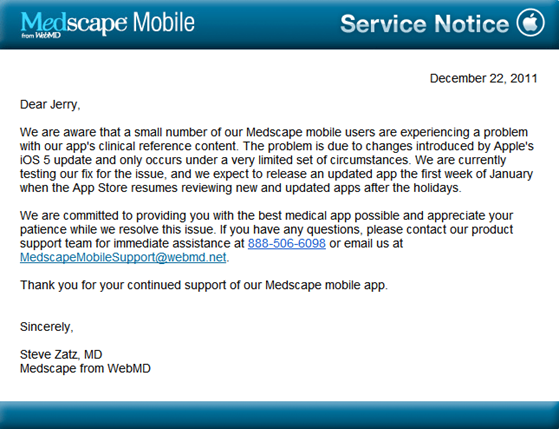Reliance on pharma-sponsored digital resources among online U.S. adults is significant. The research found “51% of online U.S. adults (ages 18+) use pharma-sponsored digital resources, such as condition and treatment information, disease management tools, doctor discussion guides, or mobile apps or websites.†This validates that the interactive information and tools produced by biopharma are being utilized and appreciated.
Use of these materials results in action: a conversation about a prescription drug. The study learned “43% of consumers using pharma-sponsored digital resources have discussed prescription drugs with a doctor, nurse, or pharmacist as a result.†This data point supports the business objective behind providing these interactive resources: generating a conversation with a healthcare professional. Note that the study was fielded online among 6,634 U.S. adults, ages 18+ during Q4 2011.
For comparison, Prevention Magazine’s Direct to Consumer Study 2011 found that as a result of seeing an advertisement – not necessarily online – 77% of survey respondents talked to a doctor and 23% asked for a prescription.
How scary is this! Getting consumers to talk about their medication with their physician is a good thing; talking with their pharmacist even better. However, many times this type of advertising (“digital resourceâ€) results in consumers asking about something completely inappropriate. Which, as we all know, can lead to a physician prescribing an unnecessary medication, using something that they’re not familiar with or prescribing something they wouldn’t consider first line.
All you have to do is look at the top 5 “patient and caregiver groups to agree that pharma should be involved in online health consumer communities†to understand why this is such a bad idea.
1. ADD/ADHD Caregivers
2. Bipolar Disorder Caregivers
3. Epilepsy Caregivers
4. Cystic Fibrosis Patients
5. Rheumatoid Arthritis Patients
Yikes! Choosing drug therapy is quite a bit different than picking out a book on Amazon and it should be treated that way.



 medGadget
medGadget